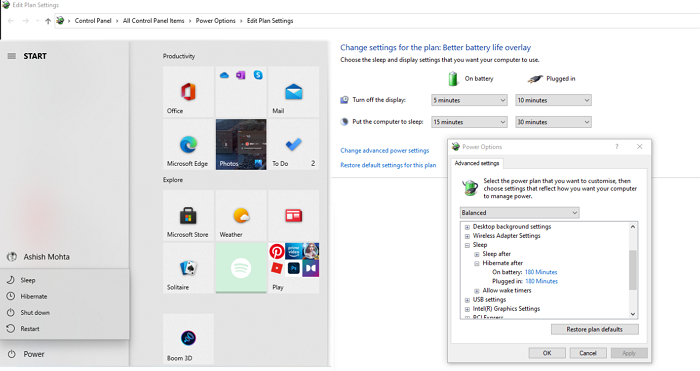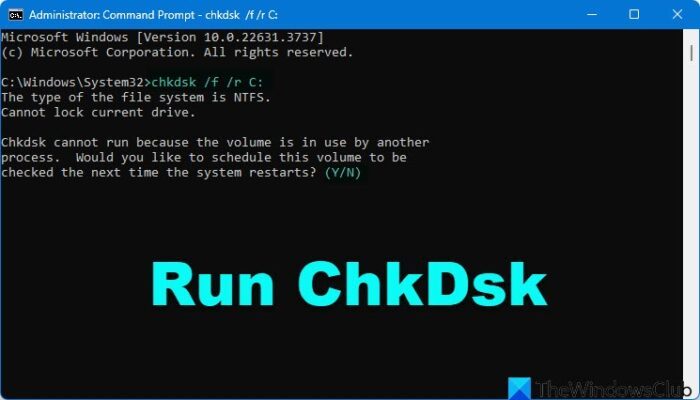Hibernation allows Windows 11/10 to resume the same state as before it went to hibernation. It comes in handy when you do want to put it in sleep mode. However, if you face a problem where Hibernate does not restore the previous state of the PC, this post will help you resolve the problem.

Hibernate does not restore the previous state of the PC
Follow these methods if the hibernation is not working as expected.
- Delete Hibernation File
- Run CHKDSK on Harddisk
- Check BIOS ACPI S-States
You will need admin permission and enough knowledge to change settings in the BIOS.
If you can log in normally, good; else you will have to boot into Safe Mode, enter the Advanced Startup options screen, or use the Installation Media to boot to be able to carry out the instructions for the first two suggestions.
1] Delete Hibernation File

Windows stores the state of the computer or hibernation into a file with the name hiberfil.sys. It would be best to delete the hibernation file. While you can manually delete the file by first unhiding it in Windows Explorer and then forcefully deleting it, instead of that, I would recommend you to disable and then re-enable hibernation. This will automatically delete the hibernation file from the computer.
Open Command Prompt with admin privileges. Type and press the Enter key after typing these commands one after the other:
powercfg –h off attrib -h hiberfil.sys delete hiberfil.sys powercfg –h on
Make sure you are on the C Drive, where Windows is installed.
2] Run CHKDSK on Hard disk

Hibernation files are stored in the primary drive, i.e., where Windows is installed. There may be some corruption, such as bad sector, and the file is part of that sector. In that case, Windows will fail to save the state into the file, and you will not get the expected result.
Open Command Prompt with admin permission, and then type the following command to run the chkdsk utility.
chkdsk c: /f /r
- /f option fixes errors on the disk. It may warn about the check to take place post-reboot.
- /r option locates bad sectors and recovers readable information.
Once the process completes, hibernate the computer, and bring it back to its normal state. If you can see the same state as before, then the issue has been resolved.
3] Check BIOS ACPI S-States
A misconfigured BIOS can also cause hibernation to behave improperly. In that case, you will need to do two things.
- The first is to update the BIOS to the latest version.
- Second, check the settings for ACPI S-states in your BIOS.
Hibernation states are usually named S4, S5, or S6 or a section related to standby, hibernation or power. Make sure to change them one by one, and check if any changes fix the hibernation problem.
I hope one of these suggestions helps you to resolve the problem and that hibernation works as expected on your Windows PC.
Why is Hibernate not working in Windows?
If the hiberfil.sys Hibernation file has become corrupted Hibernate may not work properly on your Windows computer. Disabling and Enabling Hibernate function can help.
Leave a Reply